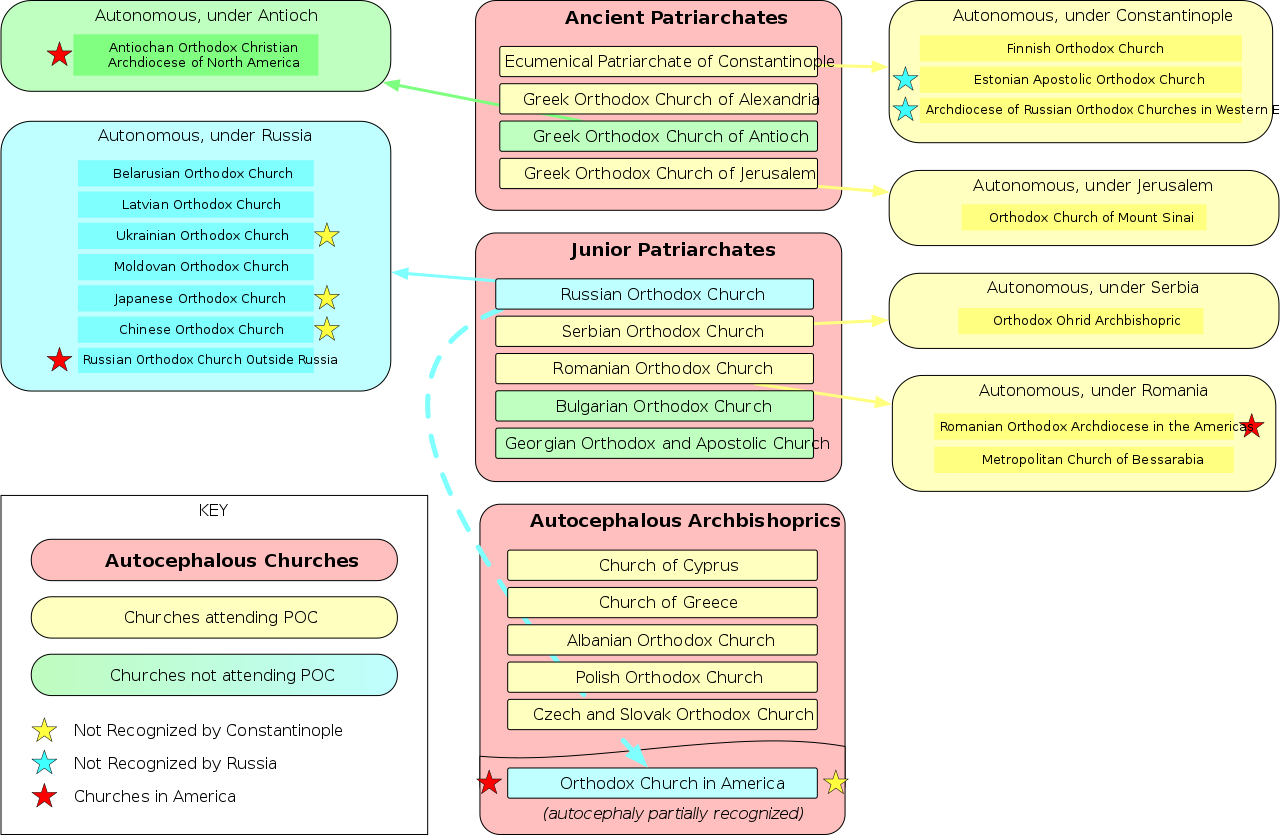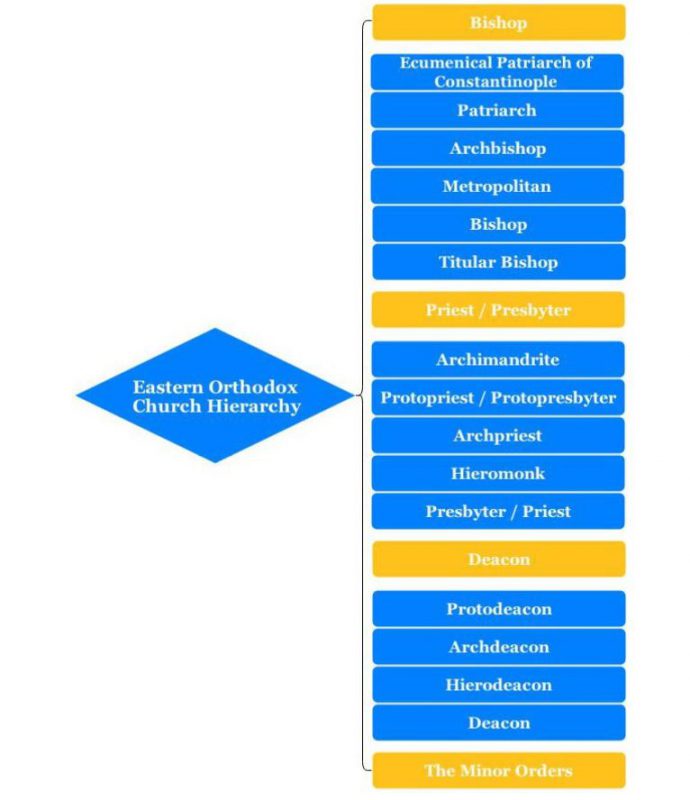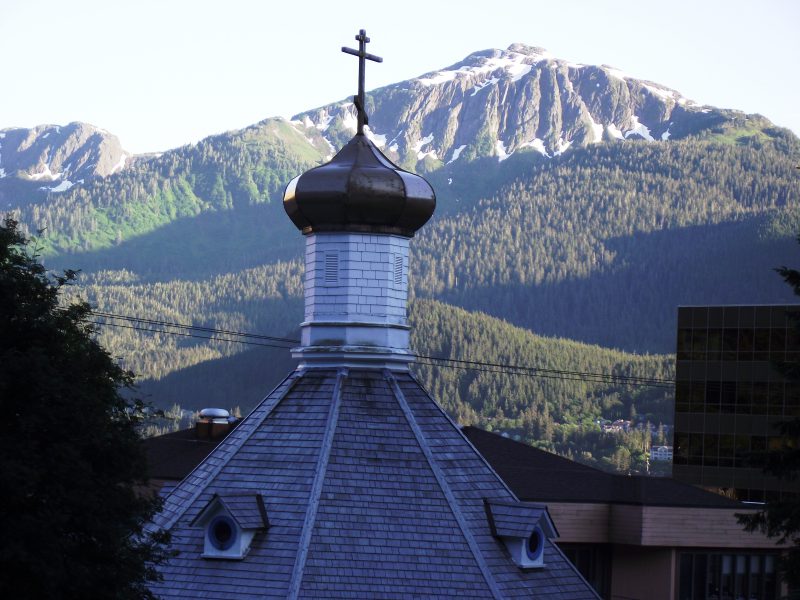Many inquirers into the Orthodox Faith start in a similar place: wondering why there are so many. Greek, Russian, Antiochian, Georgian, Serbian, Romanian… And along with that curiosity comes a host of other questions. Exactly how many of these “national” churches are there? Does this mean I have to be (insert ethnicity here) to attend services at this church? How is this church different from the other Orthodox churches in my town/city? We explore all of that, and more, in this post!
7 minutes
What is the Eastern Orthodox Church?
The word Orthodox is a combination of the Greek words orthos and doxa. Orthos means “straight” or “correct.” Doxa means “glory,” “worship,” and “doctrine.” So, the word Orthodox means both “proper worship” and “correct doctrine.” Eastern Orthodoxy (sometimes simply called the Orthodox Church) has an organic and continuous 2,000-year history spanning from the time of Jesus’ apostles to the present. In other words, what we call today the Eastern Orthodox Church (EOC) is the original Church that wrote, compiled, and canonized the Holy Scriptures. It is the Church that formulated the traditional doctrines of Christianity. And it remains largely unchanged to this day.
Read More: What is the Orthodox Church?
Eastern Orthodox vs. “Oriental” Orthodox
With both Eastern (Chalcedonian) and Oriental (Non-Chalcedonian) Orthodox using the word Orthodox in their nomenclature, some people believe these churches are under the same umbrella. However, there are irreconcilable differences between our churches that stem from Oriental Orthodoxy’s rejection of the fourth ecumenical council. As such, the Eastern Orthodox Church is not – and has not been – in communion with the Non-Chalcedonian churches for nearly 1600 years.
Eastern or Greek Orthodox?
Historically, the term “Greek Orthodox” has been used to describe all Eastern Orthodox Churches in general. In these cases, “Greek” referred to the heritage of the Byzantine Empire. Theologians utilized the Greek language in early writings, and Greek was spoken widely throughout the Empire. Over the next several centuries, most parts of the liturgy, traditions, and practices of the church of Constantinople (Greek in their nature) were adopted by all, and still provide the basic patterns of modern Orthodox Christianity. Thus, the Eastern Church came to be called “Greek” Orthodox.
Related: 10 Misconceptions About The Eastern Orthodox Church
Beginning in the 10th century, Orthodox Christians around the globe began abandoning the “Greek” identifier, replacing it with their own ethnicities (Serbian, Antiochian, etc.) Today, only churches explicitly tied to Greek or Byzantine culture call themselves Greek Orthodox.
How many different types of Orthodox churches are out there?
Most Orthodox churches today fall into either Eastern Orthodoxy or Oriental Orthodoxy. In addition to these, some other churches exist that have no affiliation, mostly in the West.
Within the EOC there are 14 autocephalous regional churches (plus the Orthodox Church in America*) that exist in full communion with one another. This essentially means these churches share the same core beliefs about doctrine, Holy Tradition, and interpretation of Scripture. The only differences you might find would be cultural (language, architecture, local customs) or administrative (different priests, bishops, etc.). All Eastern Orthodox churches follow the same basic hierarchical structure, but the people in those positions differ depending on jurisdiction.
Conciliar vs. Hierarchical
The governance of the global Orthodox Church is conciliar, which means no patriarch or jurisdiction has more authority than any other. At the same time, the Church also has a hierarchy in place within each of its autocephalous churches. This allows for internal order and stability, while also preventing one hierarch from claiming control of the global Church (as we see in Roman Catholicism).
*Only the Russian, Bulgarian, Georgian, Polish, the Czech-Slovak churches recognize the Orthodox Church in America as autocephalous. So, depending on which archdiocese you attend or visit, the number of autocephalous churches is either 14 or 15.

Internal hierarchy of the Church
Each autocephalous church within Orthodoxy institutes a hierarchy of ordained clergy (see Image 2 below). Underneath the chart are brief descriptions of each position.
You may notice the position of Ecumenical Patriarch at the top-most position under the Bishop category. That’s because the Ecumenical Patriarch of Constantinople holds the position of Primus Inter Pares, or the First Among Equals. It may sound like the Ecumenical Patriarch is the head of everything. However, his title is merely honorary; in other words, it does not grant any authority over any of the other Patriarchs.

Description of Hierarchy Positions
Patriarch – head of a Church (e.g. Serbian, Antiochian)
Archbishop – head of the capital city or Orthodox country (e.g. Syria, Thessalonica)
Metropolitan – head of a large city or a diocese
Bishop – oversees a special community of Orthodox Christians or a diocese and possesses complete priesthood; ordains clergy; selected only from monastic priests
Titular Bishop – assistant to Bishop; not in complete charge of a city
Archimandrite – title of honor awarded to monastic priests
Protopriest / Protopresbyter – titular honor given only to non-monastic priests
Archpriest – title of honor given to non-monastic priests; placed over many parishes
Hieromonk – destined priest (aka “priest monk”)
Presbyter / Priest – presides over an individual parish
Protodeacon – titular honor awarded to non-monastic deacons
Archdeacon – senior deacon in a diocese; in charge of serving in hierarchical services; normally with the bishop
Hierodeacon – deacon monk
Deacon – ordained servant who assists the priest
The Minor Orders
Subdeacons aid the bishop or priest in multiple ways, but never with administration of the sacraments. Readers read scripture during services.
Sounds like a federation of nationalistic churches…
On the contrary! Think of it this way: the Orthodox Church is structured as One Church. However, that Church has several “jurisdictions,” which were established and expanded by missionaries and by the immigrant communities who came to America. The doctrine and worship of each jurisdiction and parish is the same. But in some, languages other than English might still be used in services. Simple, right?
Russian, Greek, Serbian, Antiochian – it is all the same Orthodox Church. To illustrate this, our parish here at Saint John’s is part of the Antiochian Orthodox Christian Archdiocese of North America, which traces its roots to first-century Antioch, the city in which the disciples of Jesus Christ were first called Christians. In contrast, just down the river in Ambridge, there is another Orthodox Church that exists under the Greek Archdiocese, and yet another under the OCA. We believe the same things they do about God, Jesus Christ, and all the intricacies of the Faith. We celebrate the same Divine Liturgy as they do, but our architecture and language differ slightly.
A brief word about Byzantine Rite Catholics
You may notice that we did not mention Byzantine Rite Catholicism anywhere in this post. That is because this rite is in communion with the Roman Catholic church, not the Eastern Orthodox Church. Aesthetically, a Byzantine Rite (or Eastern) Catholic church looks identical to an Eastern Orthodox church. However, Eastern Catholicism, because it is in full communion with Roman Catholicism, accepts the supremacy and infallibility of the pope. Eastern Orthodox churches do not. Why are our churches not in communion? Because we have quite a few substantial differences in theology that are irreconcilable.
Conclusion
The Eastern Orthodox Church is a lot simpler than people believe when first encountering her. She is an incredibly beautiful, diverse family of followers of Jesus Christ, who all worship according to local customs and tradition, and collectively follow the doctrine set forth by the Fathers in the days of the ancient Church. We are not all Greeks, nor are we all Serbs. The Orthodox Church embodies every ethnicity, every language, and every race. We are all the children of God.
Read More:


4 Responses
This was more informative than any other blog, post, or video when I searched “differences between Orthodox Churches”. Thank you for that.
I live somewhere where the 2 closest Churches are Greek and Orthodox in America. I am not yet a baptized Orthodox Christian, but I have been observing the faith in accordance to Orthodox teachings.
I go to the Greek Church currently due to Greek friends who showed me The True Faith. However, I and my family are not Greek and sometimes feel the intruder in their culture.
My question is: if we were to be baptized by the American Church, would we not be considered Christians by the Greek church?
Thank you
Anthony,
Christ is in our midst! Yours is an excellent question, and we will definitely add a section to a new revision of this article addressing it. In short, yes. You would still be considered Christians. Regardless of a church’s “jurisdiction” (Greek, OCA/American, Russian, etc.) we are all part of the one holy, catholic, and apostolic Orthodox Church. So wherever you are baptized into the Orthodox Church, every other Eastern Orthodox church that is in communion with yours will allow you to partake of the Eucharist and participate in the other Sacraments.
Your sentiments are not unique either; we hear this a lot from people who are not Orthodox, especially those exposed to the Greek and Serbian churches. However, not all Orthodox churches are like this. So take heart and choose the parish in which you feel welcomed and like a part of the family, because you ARE!
God bless you in your spiritual journey!
May you do some looking into the website http://www.netzarim.co.il? Do you feel it’s authentic as they claim? The leader calls himself the next Paqid of the Netzarim after James the Just. He claims the Nazarene sect of Judaism was the only religion Jesus started and is fiercely anti Christian. I read there and in Nazarene Jewish Christianity and http://www.netzarimantoecie.com that Jesus’s movement ended in the 4th century. Acts chapter 5 34-39 says if his movement came to nothing then he would be a false Messiah. If Jesus is still Messiah why did the Lord let His Messiah’s religious movement go extinct? Thanks
Craig,
Christ is in our midst. Your doubts are justified and sound. The Scriptures – indeed, Christ Himself – tell us that the gates of hell will not prevail against the Church. For the Church to have gone extinct at any point makes Christ (and therefore God) a liar, which is utter foolishness. We must also remember the words of St. Paul in Galatians: “But even if we, or an angel from heaven, preach any other gospel to you than what we have preached to you, let him be accursed.” May God bless you.